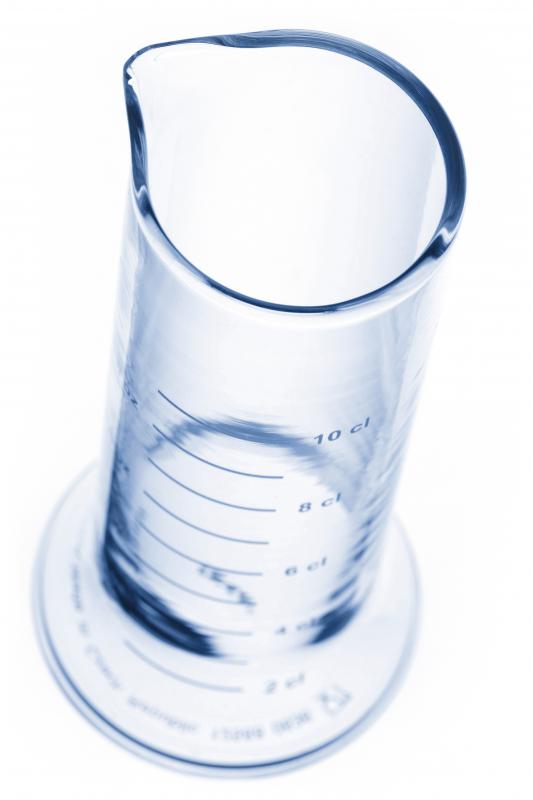At EasyTechJunkie, we're committed to delivering accurate, trustworthy information. Our expert-authored content is rigorously fact-checked and sourced from credible authorities. Discover how we uphold the highest standards in providing you with reliable knowledge.
What is a Pluviometer?
A pluviometer is a rain gauge, an instrument that is used to measure the amount of precipitation in the form of rainfall that has fallen at a given location over a specified period of time. The origin of the term is from the Latin word pluvia, which means "rainfall." Another synonym for rain gauge is ombrometer, from the Greek ombros, which means "rain" or "shower." The term "pluviometer" is more commonly used, but either synonym is an acceptable term for a rain gauge. "Udometer" is an older, archaic term, from the Latin udus, or "damp."
A standard weather station includes a pluviometer and several other pieces of weather equipment. The other standard weather instruments include anemometers for measuring wind speed, barometers for measuring atmospheric pressure, hygrometers for measuring humidity, thermometers for measuring temperature and snow gauges. Snow gauges measure precipitation that has fallen in solid form, and pluviometers measure rainfall that has fallen in liquid form. A simple pluviometer is a graduated cylinder with a uniform cross-section. Rainfall is measured as the height, usually expressed in millimeters or inches, of the liquid collected in the cylinder.

The data that is measured is reported as the height plus or minus a margin of error that has been calibrated to the design of the instrument. Depending on the type of gauge, data for very small — or "trace" — amounts of rainfall can be collected. Trace amounts tend to be underestimated because of evaporation and drops that cling to the sides of the cylinder.

Simple pluviometers are inexpensive and are well suited to observation stations for official measurements as well as for home and garden use. The official rain gauge used by the National Weather Service in the United States, for example, is a simple metal cylinder 8 inches (20.32 cm) in diameter, with a capacity of 2 inches (50.8 mm) of rainfall. Other types of gauges include digital pluviometers that continuously record data, gauges that weigh the precipitation, tipping bucket gauges that provide a count of the number of times a specific amount of rainfall has been collected and gauges that can be read by radar equipment. These sophisticated instruments are more expensive than the standard gauge, and they are often used for scientific applications that require very precise measurements.
The placement of a pluviometer is critical to the obtaining of accurate measurements. Rain gauges should be situated on level ground, in a location that is representative of the measurement area. Very windy locations aren’t suitable for obtaining accurate measurements, because the rain will tend to be blown into or out of the cylinder, changing the height of the rain collected. The location also should be free of overhead obstructions.
AS FEATURED ON:
AS FEATURED ON:












Discuss this Article
Post your comments